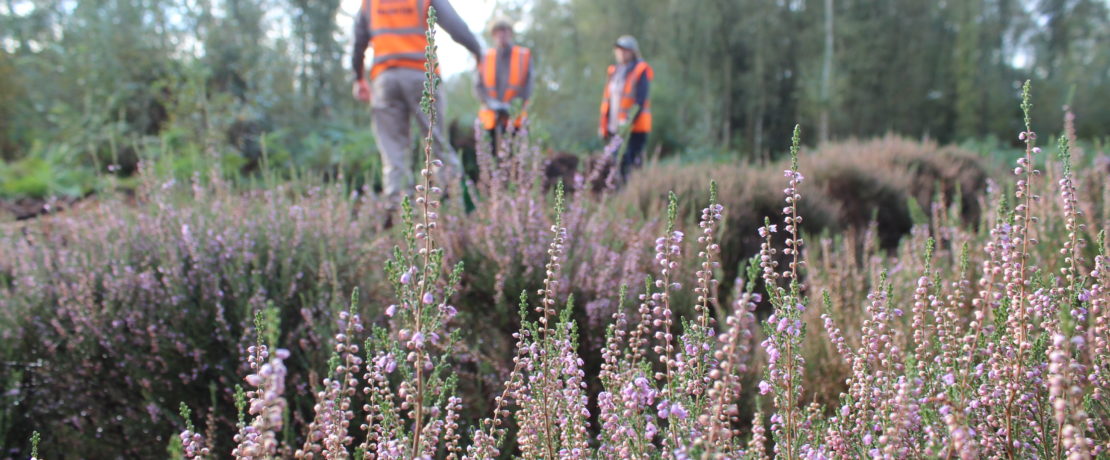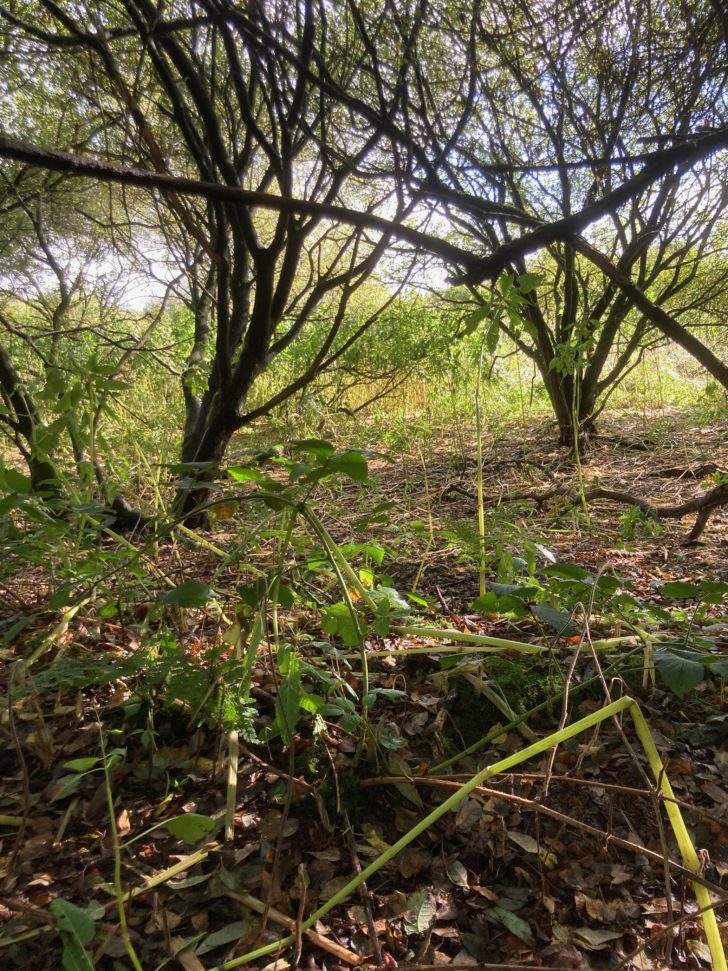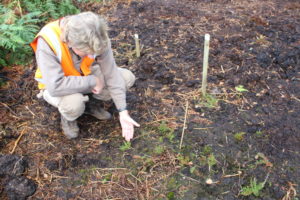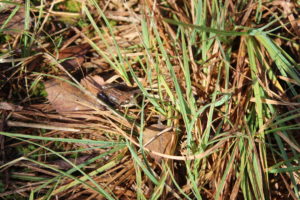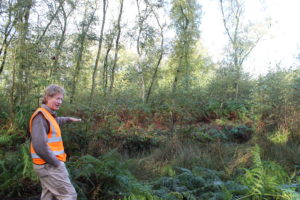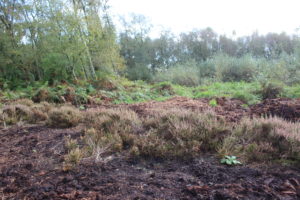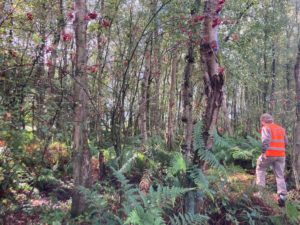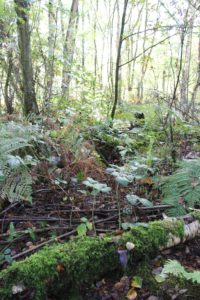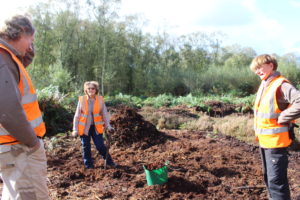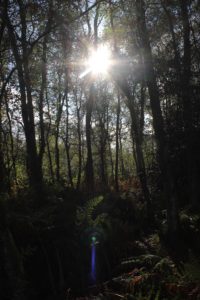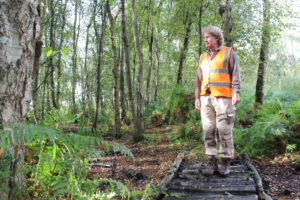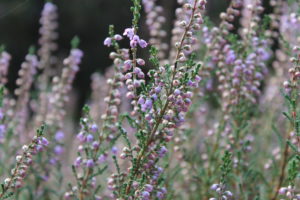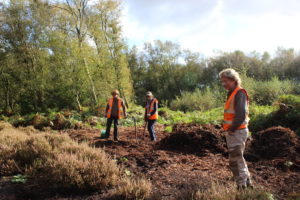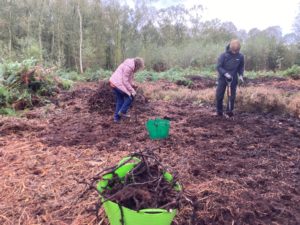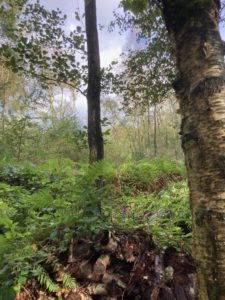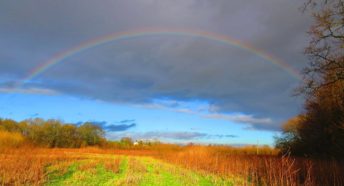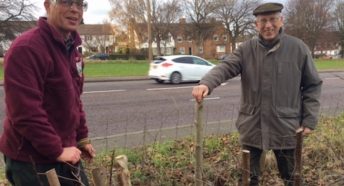Restoring mossland habitats at Birch Moss Covert
Trafford Wildlife Volunteers are working to restore Birch Moss Covert to its former damp glory. I joined the group on a showery September day to find out more about the practical work that the group is doing at its twice-weekly work parties.
Mosslands might seem insignificant compared with the spectacular scenery of our forests and mountains, but in addition to playing a vital role in the fight against climate change, they are one of the most threatened and degraded habitats in the UK. Birch Moss Covert Nature Reserve is part of Carrington Moss, previously a much more extensive wetland area, much of which has now been ‘improved’ for farming. The reserve is described as ‘degraded raised bog’, but was identified as having potential to be restored to support mossland species and habitats in a 2014 survey by Dr. Paul Thomas.
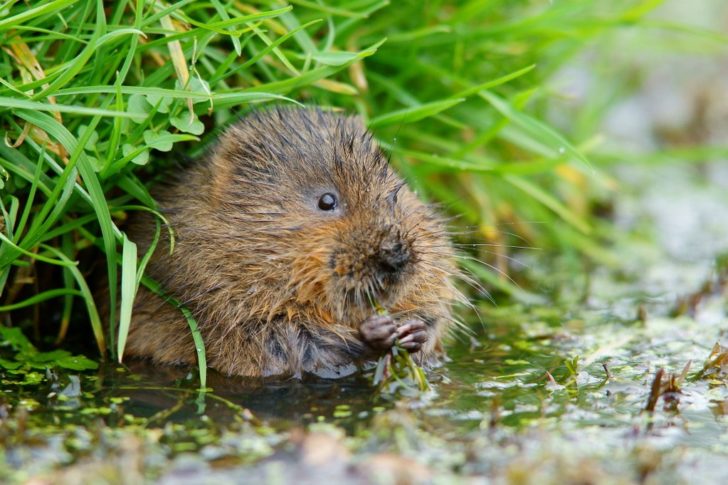
Managed in order to provide a habitat for water voles displaced by the construction of the Manchester United training ground adjacent to the site, a buried impermeable barrier of Plygene sheeting forms the core of a bund surrounding the site on three sides, keeping the water in to allow bog pools and other aquatic habitats to develop. Small pools have been scraped from the ground and a waterway enlarged to make a suitable habitat for the water vole; work is ongoing to improve the habitat for this protected species, which has suffered from habitat loss and predation by mink.
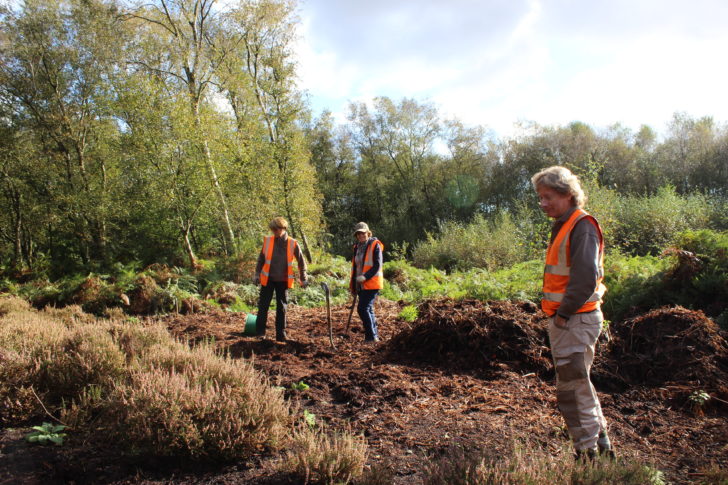
Three tasks were on the cards today; the birch trees that give the reserve its name are sucking the moisture out of the ground, so one ongoing task is to remove birch seedlings and saplings.
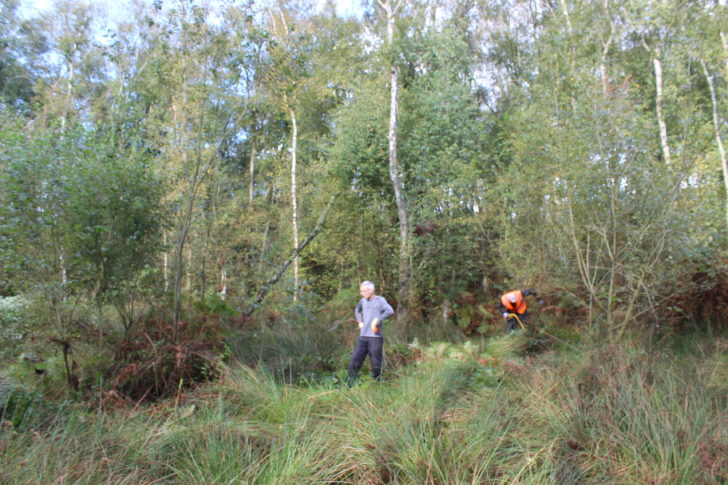
A single silver birch can produce up to a million seeds in a year, and the volunteers can only work with hand tools, so it’s vital to remove them as early as possible before they get too big. Some of the volunteers were cutting down saplings as part of work to improve the habitat for the Willow Tit, a red-listed bird which is already present on the site.
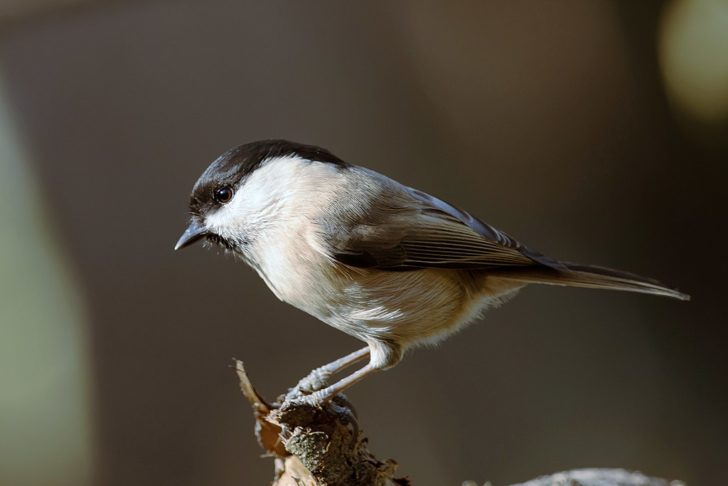
The team have started to create nesting habitats for the tits as in the image below, and are clearing areas of the reserve and transplanting brambles, which the willow tits love, to the clearings from other areas of the site.
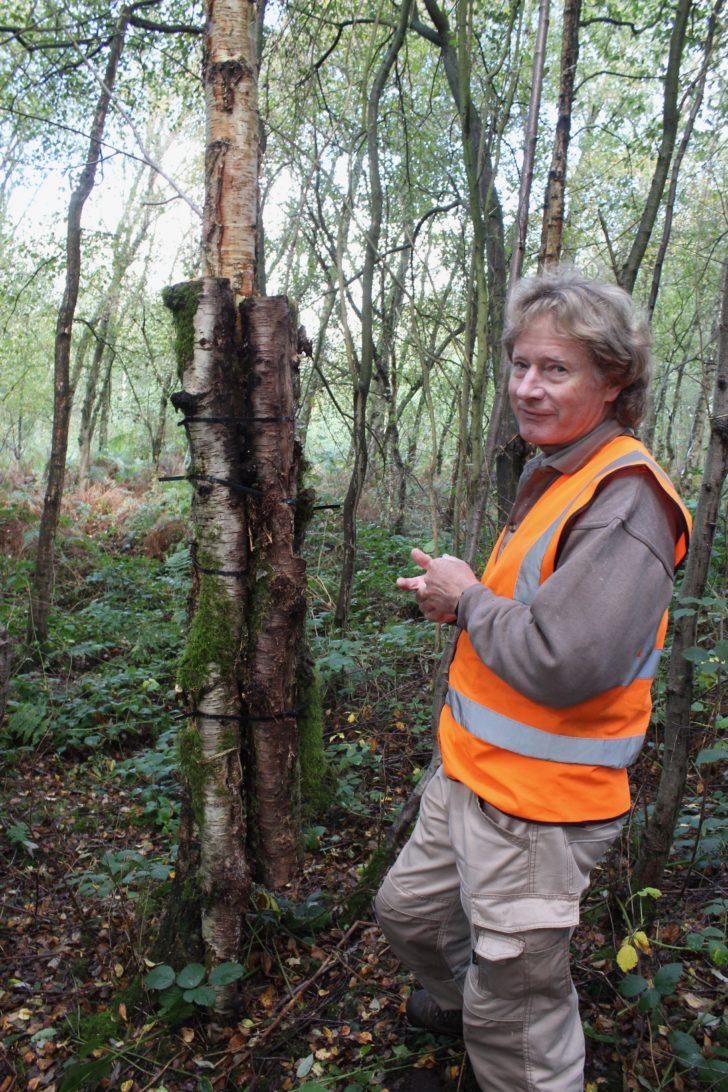
I hadn’t previously appreciated the difficulties of working on such a site; management visits were until recently relatively few and far between, meaning that creating paths to access the site was necessary before any habitat management can take place, and keeping the paths clear is an ongoing maintainance task.
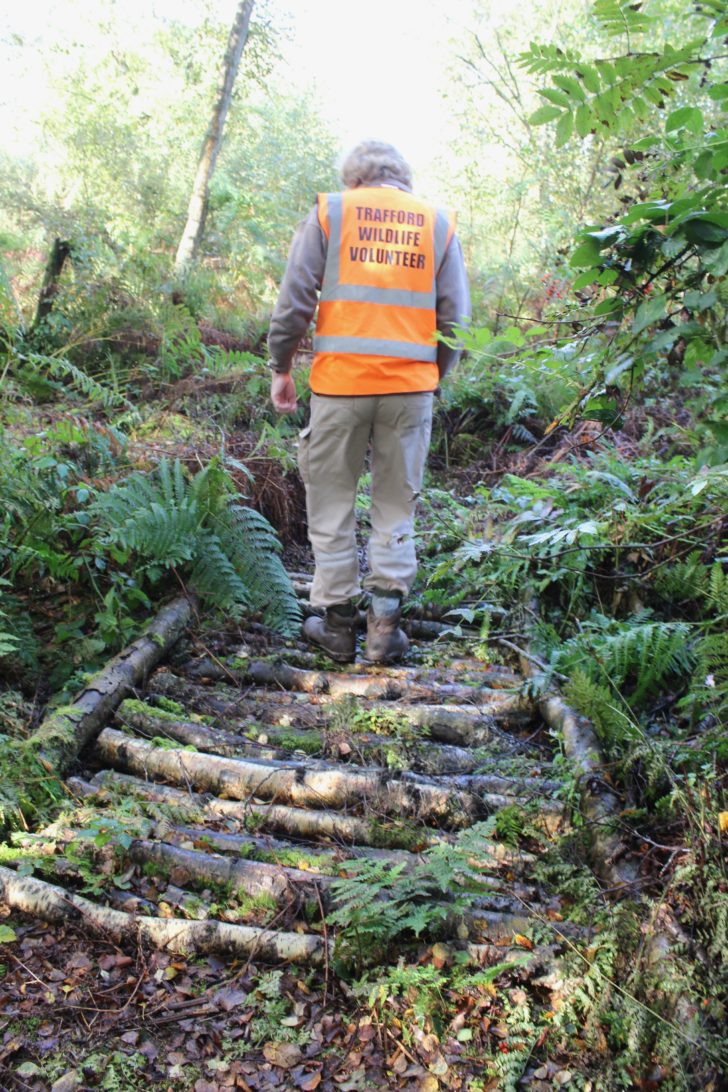
Volunteers have constructed stretches of corduroy road with some of the cleared birch to ensure that the more waterlogged parts of the site remain accessible throughout the year. Sometimes the growth of desirable species such as heathers or oak seedlings means a path needs to veer from its existing route – the cleared area makes a competition-free site for the germinating plant.
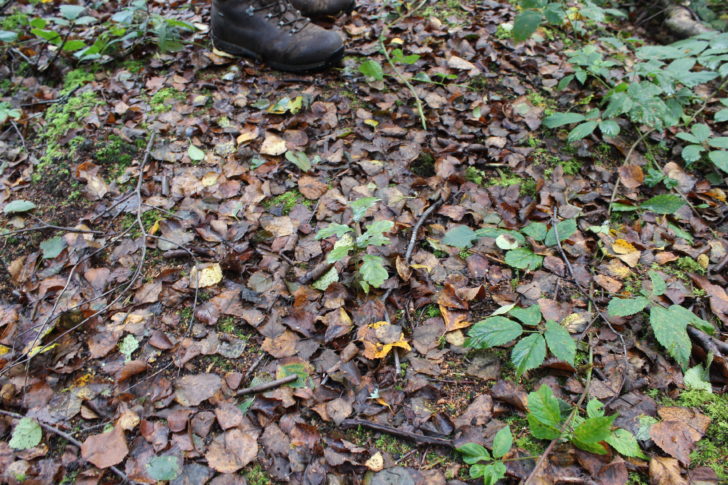
I was amazed that the reserve was so peaceful; despite being situated between Broadheath and Carrington, so close to the Manchester conurbation, I heard only the occasional rumble of a passing car to momentarily disturb the tranquillity.
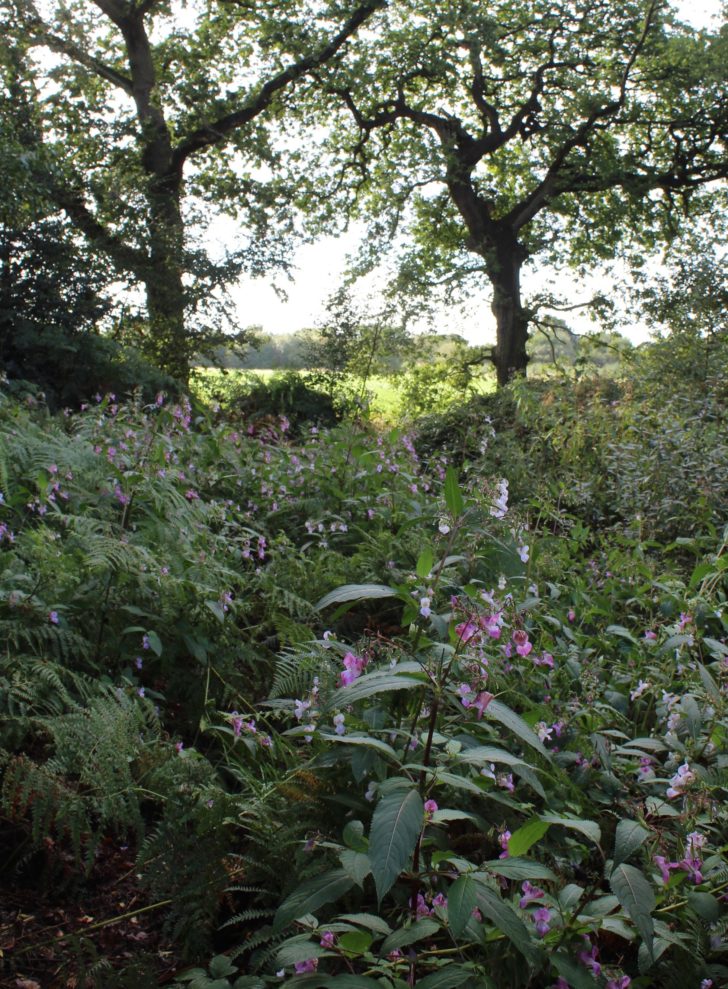
Control of invasive species is a major part of the work, with Himalayan balsam (the flowering plant seen above) a time-consuming menace. Having received weekly emails over the summer detailing upcoming work party activities, I am aware of how many hours have been spent ridding the site of this interloper. If not controlled, Himalayan balsam will outcompete native plants, reducing biodiversity, and when it dies back in winter, it leaves bare soil which is prone to erosion. Touring the site with Geoff Densham, the work party leader of the day, I could see how successful the volunteers’ work had been – there was barely any balsam to be seen, apart from in a couple of small sections of the reserve which the volunteers have not yet reached. By contrast, on a neighbouring site there had been no effort to clear the plant, and the understorey was simply live or dead balsam – click the image below to see a panoramic image demonstrating the contrast with Birch Moss Covert, where the balsam has been managed.
In the 1880s, Carrington Moss was described as ‘a level expanse of purple ling’ – common heather. As well as nurturing the heather currently growing, and carefully marking out all the new shoots with stakes to avoid them being trodden on, the group has obtained funding for 200 heather plants, and the other task that was taking place was preparing the ground for them. I spent a very rewarding hour or so with a garden fork, digging out the rhizomes that make bracken so resilient, in order to give the heather the best chance of survival once it has been transplanted to its new home.
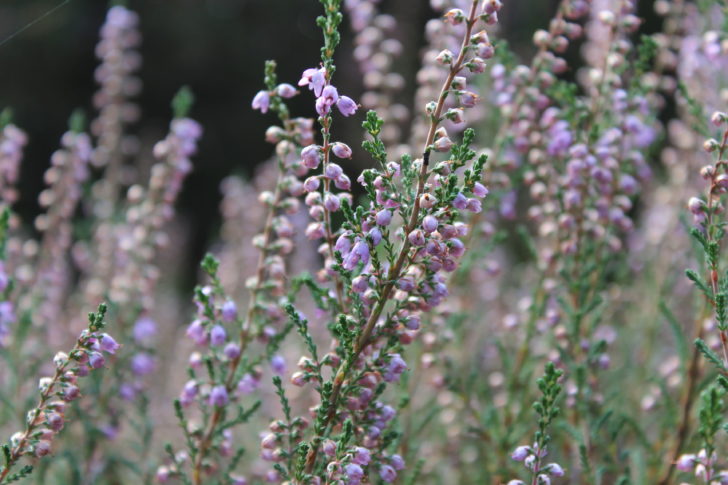
Despite visiting Birch Moss Covert twice weekly, so much more could be achieved with more workers. Trafford Wildlife Volunteers have a strong core of regular volunteers, but would welcome new members. If you would like to get involved, visit the website to find out more. Despite not having properly prepared for a classic English rain-soaked picnic lunch (can’t sit on raincoat whilst eating as well as wearing it to keep dry ……), I can thoroughly recommend it!
Gallery
click image to see a larger version
